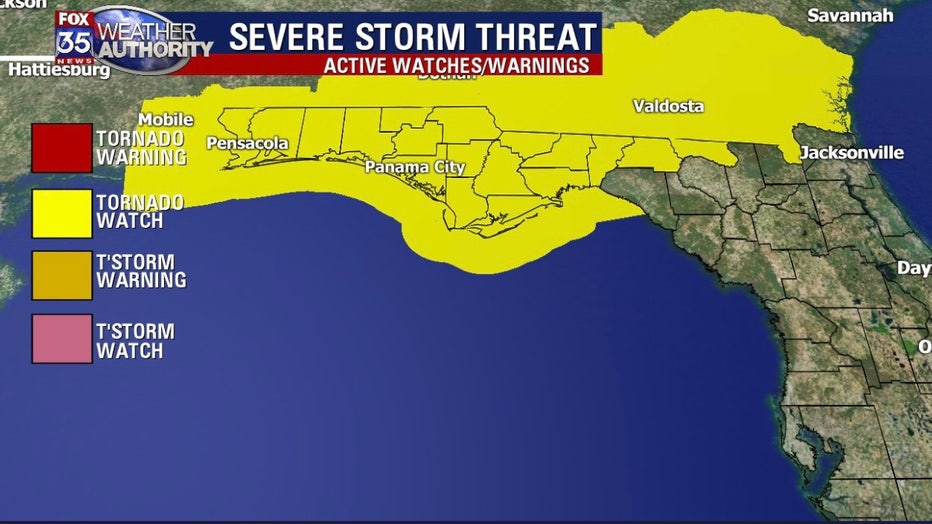Damaging Winds And Fast-Moving Storms: What To Watch For

Table of Contents
Recognizing the Signs of Approaching Damaging Winds and Fast-Moving Storms
Knowing the warning signs of approaching damaging winds and fast-moving storms is crucial for effective storm preparedness. Early detection allows you time to implement your safety plan and protect yourself and your family. Several key indicators can signal impending severe weather:
-
Dark, greenish skies: This ominous coloring often precedes severe thunderstorms. The dark hue is due to the high concentration of water droplets and hail within the storm cloud, indicating the potential for heavy precipitation and large hail – both often associated with high winds.
-
Rapidly changing wind direction and speed: A sudden shift in wind direction or a dramatic increase in wind speed is a major red flag. This indicates a change in atmospheric pressure and the possible arrival of a strong weather system bringing damaging winds.
-
Large hail: Hailstones the size of peas or larger are a clear sign of a severe thunderstorm capable of producing damaging winds. Larger hail indicates stronger updrafts and downdrafts within the storm, increasing the likelihood of intense wind gusts.
-
Loud rumbling or roaring sounds: A deep, prolonged rumble that sounds significantly different from typical thunder, or a loud roaring sound, might indicate an approaching tornado or the powerful downdraft winds of a microburst or downburst.
-
Monitoring weather radar and alerts: Regularly checking weather forecasts and alerts from reputable sources like the National Weather Service (NWS) or your local meteorological agency is paramount. Pay close attention to warnings for severe thunderstorms, tornadoes, hurricanes, and high wind advisories. Utilize weather apps and their push notifications for immediate alerts. Understanding the different levels of warnings (watch vs. warning) is crucial for effective response.
Understanding Different Types of Damaging Winds
Damaging winds manifest in several forms, each with its unique characteristics and potential for destruction. It's vital to understand these distinctions to better prepare for their specific threats:
-
Downbursts: These are strong, concentrated downdrafts of air from thunderstorms that violently impact the ground. They can cause significant, localized wind damage, often resembling straight-line winds but with concentrated force.
-
Derechos: These are widespread, long-lived wind storms associated with a band of rapidly moving thunderstorms. They can produce damaging winds over a vast area, spanning hundreds of miles, causing extensive damage to infrastructure and vegetation.
-
Tornadoes: These are violently rotating columns of air extending from a thunderstorm to the ground, characterized by extremely high wind speeds and intensely destructive power. Tornadoes are unpredictable and require immediate shelter.
-
Hurricane-force winds: Sustained winds of 74 mph (119 km/h) or greater are characteristic of hurricanes and are capable of causing catastrophic damage. These winds are associated with intense low-pressure systems and heavy rainfall.
-
Wind Shear: This refers to a significant change in wind speed or direction over a relatively short distance. While not directly damaging in itself, wind shear plays a crucial role in the formation and intensification of severe thunderstorms and tornadoes.
Safety Precautions During Damaging Winds and Fast-Moving Storms
Proactive preparation is key to minimizing risk during damaging winds and fast-moving storms. Implementing these safety precautions can save lives and property:
-
Develop a family emergency plan: Designate a safe room or shelter – an interior room on the lowest level of your home, away from windows – and practice your evacuation plan regularly, ensuring everyone knows the procedure.
-
Prepare an emergency kit: Stock a kit with essential supplies including water (one gallon per person per day for several days), non-perishable food, flashlights, extra batteries, a first-aid kit, medications, and important documents in a waterproof container.
-
Stay informed: Continuously monitor weather reports from reputable sources and heed all warnings and advisories issued by authorities. Sign up for emergency alerts through your local government or mobile applications.
-
Seek shelter immediately: If a severe weather warning is issued, move to your designated safe room or shelter immediately. Stay away from windows and exterior walls.
-
Avoid driving during severe weather: If caught in a storm while driving, pull over to a safe location – away from trees, power lines, and flood-prone areas – and wait until the storm passes.
Conclusion
Staying safe during damaging winds and fast-moving storms requires preparedness and awareness. By recognizing the warning signs, understanding different types of damaging winds, and taking appropriate safety precautions, you can significantly reduce your risk. Remember to regularly monitor weather reports, develop a family emergency plan, and prepare an emergency kit to stay informed and protected. Don't underestimate the power of damaging winds; proactive preparation is key to staying safe during fast-moving storms. Stay informed and stay safe! Learn more about protecting yourself from damaging winds and other severe weather events by researching local resources and emergency preparedness guides.

Featured Posts
-
 China Launches Initiative For Space Based Supercomputing
May 21, 2025
China Launches Initiative For Space Based Supercomputing
May 21, 2025 -
 Exploring The World Of Cassis Blackcurrant From Vine To Palate
May 21, 2025
Exploring The World Of Cassis Blackcurrant From Vine To Palate
May 21, 2025 -
 Cassis Blackcurrant A Culinary Exploration
May 21, 2025
Cassis Blackcurrant A Culinary Exploration
May 21, 2025 -
 1 231 Billion Recovery Pledged From 28 Oil Companies
May 21, 2025
1 231 Billion Recovery Pledged From 28 Oil Companies
May 21, 2025 -
 How To Survive A Screen Free Week With Kids
May 21, 2025
How To Survive A Screen Free Week With Kids
May 21, 2025
